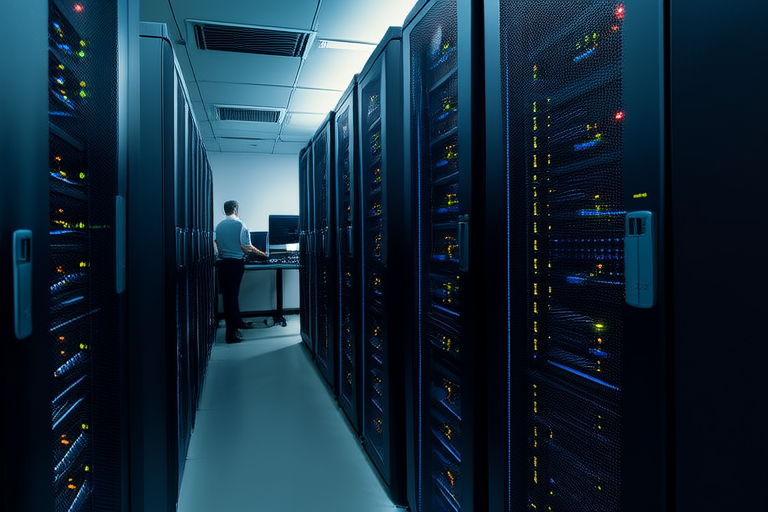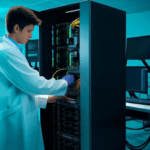Navigating the Digital Landscape: When to Choose Cloud Over Edge Computing
Introduction
In today’s rapidly evolving digital landscape, businesses must navigate between two primary computing paradigms: cloud computing and edge computing. Both technologies offer unique advantages, but they cater to different needs and use cases. Understanding when to choose cloud over edge computing is crucial for optimizing performance, reducing costs, and enhancing user experiences. This article aims to provide a comprehensive comparison between these two approaches, highlighting their respective strengths and weaknesses.
Understanding Cloud Computing
Cloud Computing refers to the delivery of computing services—such as servers, storage, databases, networking, software, and intelligence—over the Internet (“the cloud”). Instead of owning and maintaining physical hardware, businesses can access these resources on demand, scaling up or down as needed. The key benefits of cloud computing include:
- Scalability: Cloud services can handle varying workloads, ensuring that businesses have the resources they need during peak times without overprovisioning.
- Cost-Effectiveness: By eliminating the need for on-premises infrastructure, cloud computing reduces capital expenditures and operational costs.
- Accessibility: Cloud services are accessible from anywhere with an internet connection, enabling remote work and collaboration.
Common use cases for cloud computing include data storage, web applications, big data analytics, and machine learning. For instance, companies like Netflix rely on cloud platforms to store and deliver vast amounts of video content efficiently.
Understanding Edge Computing
Edge Computing involves processing data closer to where it is generated, rather than sending it to a central server or cloud. This approach minimizes latency and bandwidth usage, making it ideal for applications requiring real-time responses. The key benefits of edge computing include:
- Reduced Latency: By processing data locally, edge computing significantly decreases response times, improving overall system performance.
- Improved Efficiency: Local processing reduces the amount of data that needs to be transmitted over the network, conserving bandwidth.
- Enhanced Privacy: Sensitive data can be processed locally, reducing the risk of exposure during transmission.
Common use cases for edge computing include IoT devices, real-time processing, and autonomous systems. For example, self-driving cars rely on edge computing to make split-second decisions based on sensor data.
Comparison of Cloud and Edge Computing
Both cloud and edge computing have distinct characteristics that set them apart. Here’s a comparison based on latency, bandwidth requirements, and data processing capabilities:
| Cloud Computing | Edge Computing | |
|---|---|---|
| Latency | Higher latency due to data traveling back and forth between the edge and the cloud. | Lower latency as data is processed closer to the source. |
| Bandwidth Requirements | Higher bandwidth required for transmitting large volumes of data to the cloud. | Lower bandwidth usage since only necessary data is sent to the cloud. |
| Data Processing Capabilities | Centralized processing allows for complex computations but may suffer from latency issues. | Distributed processing enables real-time decision-making but may lack the computational power of the cloud. |
The trade-off between centralized and decentralized architectures is another critical factor. Cloud computing offers a centralized approach, providing robust infrastructure and security measures. In contrast, edge computing adopts a decentralized model, offering greater proximity to data sources and reducing dependency on network connectivity.
When to Choose Cloud Computing
Cloud computing excels in scenarios where large-scale data processing, global distribution, and cost-sensitive projects are priorities. Below are specific situations where cloud computing is the better choice:
- Large-Scale Data Processing: Cloud platforms like AWS, Google Cloud, and Microsoft Azure offer powerful tools for handling massive datasets, making them ideal for big data analytics and machine learning tasks.
- Global Distribution: Cloud services enable businesses to reach customers worldwide by deploying applications in multiple regions simultaneously.
- Cost-Sensitive Projects: Cloud computing allows companies to pay only for the resources they use, optimizing costs and avoiding upfront investments in hardware.
The flexibility, security, and maintenance advantages of cloud computing further support its adoption. With managed services and automated backups, cloud providers take care of many operational aspects, freeing up internal teams to focus on core business functions.
When to Choose Edge Computing
Edge computing shines in scenarios where real-time decision-making, low-latency applications, and resource-constrained environments are paramount. Below are specific situations where edge computing is the better choice:
- Real-Time Decision-Making: Applications such as autonomous vehicles, smart cities, and industrial automation require immediate responses, which edge computing facilitates through local processing.
- Low-Latency Applications: Use cases like virtual reality, augmented reality, and online gaming benefit from reduced latency, enhancing user experience.
- Resource-Constrained Environments: Edge computing is particularly useful in settings with limited network connectivity or power availability, such as remote locations or mobile devices.
The performance, reliability, and local processing advantages of edge computing make it indispensable for certain industries. By processing data closer to the source, edge computing ensures faster responses and more efficient operations.
Hybrid Approaches
Many organizations find value in leveraging both cloud and edge computing in hybrid models. These solutions combine the best of both worlds, allowing businesses to capitalize on the strengths of each approach. For instance, edge devices can preprocess data locally before sending essential information to the cloud for further analysis. This strategy optimizes resource utilization while maintaining high levels of performance and security.
However, implementing hybrid solutions comes with its own set of challenges. Organizations must carefully design their architecture to ensure seamless integration between edge and cloud components. Additionally, managing data flow and ensuring consistent policies across distributed systems requires careful planning and execution.
Conclusion
In summary, choosing between cloud and edge computing depends on specific business needs and use cases. Cloud computing excels in large-scale data processing, global distribution, and cost-sensitive projects, offering flexibility, security, and maintenance advantages. On the other hand, edge computing is ideal for real-time decision-making, low-latency applications, and resource-constrained environments, providing performance, reliability, and local processing benefits.
As businesses continue to embrace digital transformation, understanding when to choose cloud over edge computing will be crucial for optimizing performance, reducing costs, and enhancing user experiences. By adopting the right technology based on specific requirements, organizations can stay competitive in today’s fast-paced digital landscape.


